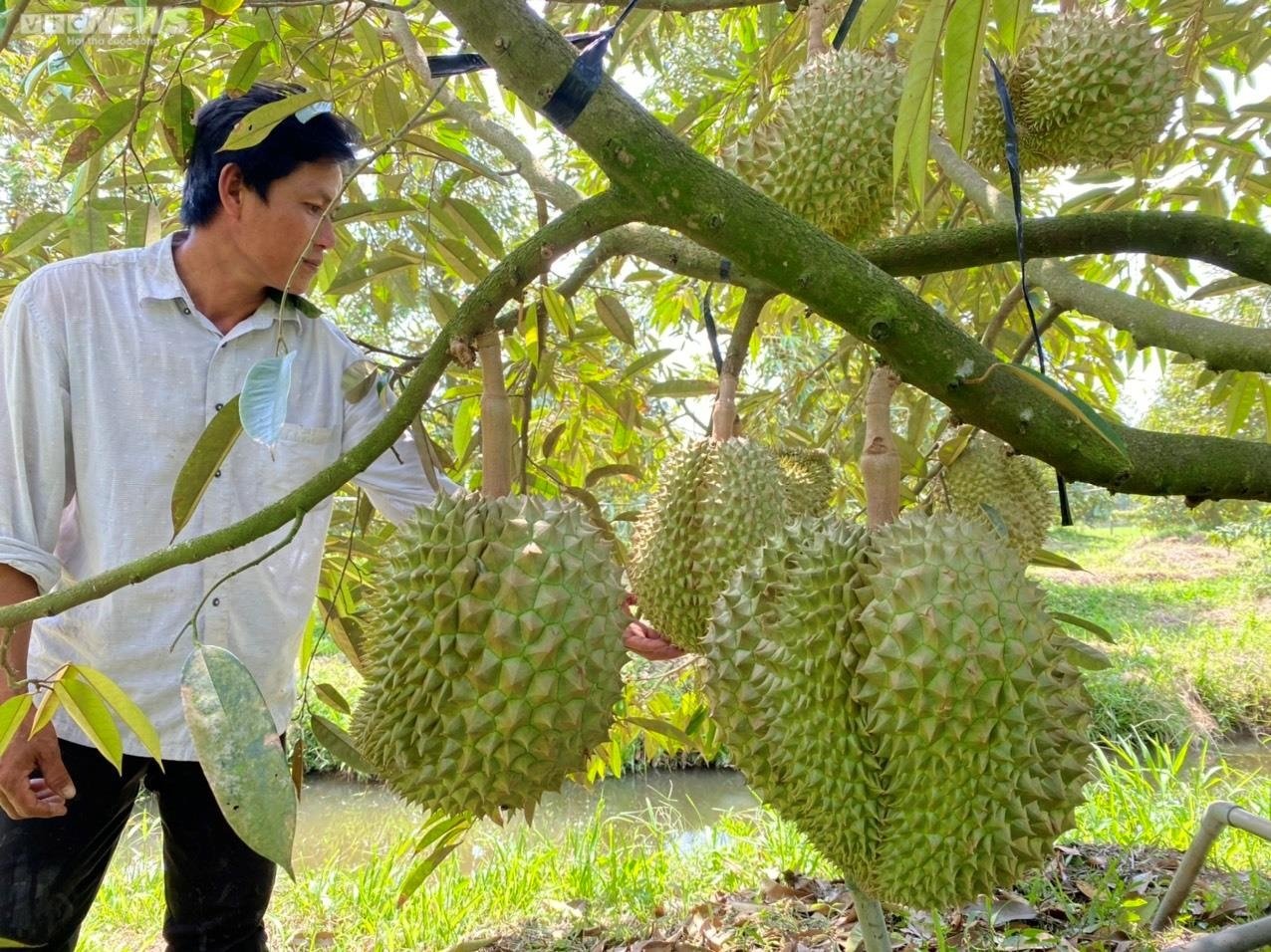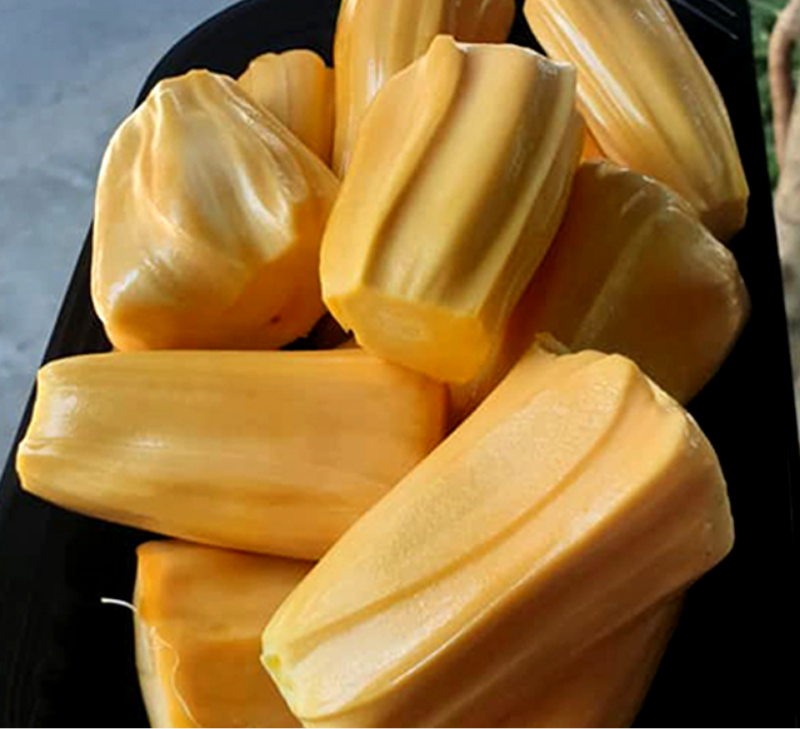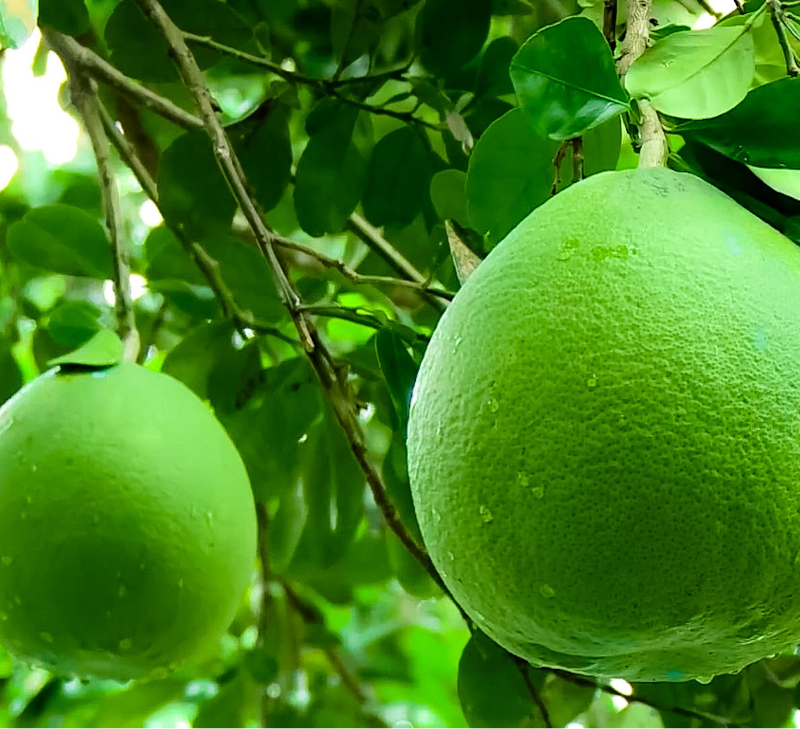Durian is a large fruit that has a rather strong and heavy smell, but is extremely rich in nutrients, such as vitamin C, B vitamins, minerals, healthy fats, fiber, and several plant compounds. other beneficial items. Durian is often present in many countries in Southeast Asia, typically Vietnam. Eating durian can bring certain health benefits.

Vietnamese Durian
1. What is durian?
Durian is known as a tropical fruit, native to Southeast Asia, famous for the nickname “king of fruits”. Although the taste of durian is quite heavy and strong, it contains more nutrients than most other fruits.
Durian is usually large in size, has a hard outer shell and has many sharp spines covering the shell. There are many different varieties of durian, the most popular being Durio zibethinus.
The fruit can be up to 30cm long and about 15cm wide, weighing 1-3 kg. Durian flesh is light yellow or red. The taste of this fruit can bring about different reactions in each person, from “discomfort” to “addiction”.
Durian is widely used in many tropical regions around the world, especially in Southeast Asia such as Vietnam, Thailand, Malaysia and Indonesia.
2. Nutritional value of durian
Durian is a very nutritious fruit, rich in vitamins, fiber along with plant compounds that are beneficial for health. In 243 grams of durian will provide:
Calories: 357
Fiber: 9 grams
Carbs: 66 grams
Fat: 13 grams
Protein: 4 grams

Durian contains more nutrients than most other fruits
Vitamin B6: 38% of the DV (daily nutritional value)
Vitamin C: 80% of the DV
Thiamine: 61% of the DV
Potassium: 30% of DV
Manganese: 39% of DV
Riboflavin: 29% of the DV
Folate: 22% of the DV
Niacin: 13% of the DV
Copper: 25% of DV Magnesium: 18% of DV
Thanks to this nutritional profile, durian has become one of the most nutritious fruits in the world. Besides, it also contains beneficial plant compounds such as carotenoids, anthocyanins, polyphenols and flavonoids.
3. How is durian used?
In Southeast Asian cuisine, durian is often selected for processing into sweet or savory dishes. Both the flesh and seeds of durian are edible, but the seeds need to be cooked before use.
The taste of durian is described as a mixture of flavors such as almond, garlic, cheese and caramel. Its smell is so strong that it is banned from some hotels and public transport systems in Southeast Asia.

Popular preparations from this fruit, include:
Soup
Juice
Durian juice
Delicious and nutritious durian juice
Boiled or roasted durian seeds
Ice cream, candy or other desserts
Side dishes
In addition, durian is also applied in traditional medicine and has some medicinal properties.
4. Health Benefits of Durian
In traditional Malaysian medicine, all parts of the durian tree, including the roots, bark, leaves and fruit, have been used to make remedies for various ailments, such as jaundice. or high fever.
Studies have shown that durian can provide some of the following health benefits:
Prevents heart disease: Plant compounds present in durian have the effect of reducing cholesterol levels, preventing hardening of the arteries.
Reduce the risk of cancer: in durian contains many antioxidants. These substances have the ability to neutralize free radicals – the main cause of the formation and growth of cancer cells in the body. Specifically, durian fruit extract can prevent breast cancer from spreading.
Control blood sugar: The glycemic index (GI) in durian is lower than that of other tropical fruits. Therefore, consuming durian can help reduce blood sugar levels, thereby preventing the risk of diabetes or heart disease.
Fights infections: The skin of the durian is a rich source of compounds with excellent anti-yeast and antibacterial properties.
5. Distribution of growing durian in Vietnam
Durian is grown mainly in the Southeast, the Central Highlands and the Mekong Delta, most notably in the provinces of Tien Giang, Ben Tre, and Lam Dong. Some other places such as Quang Nam, Hue, Khanh Hoa have also grown durian with large fruit (Figure 3.1.7), sweet but less fragrant. The area planted to durian is still expanding. Up to now, the whole country has about 15,000ha.
Sources of durian supply from domestic production: The source of domestically produced durian for the Southern market is mainly from Dong Nai, Binh Duong, Binh Phuoc, Tien Giang, Ben Tre, Vinh Long, and Ho Chi Minh provinces. HCM.
Quality durian supply to the Southern market: There are many varieties on the market, durian varieties with quite large output are: Green bitter melon, monthong, Dong Nai leek seeds… Some high quality varieties such as durian. monthong, Chin Hoa yellow rice durian, and Dong Nai yellow rice durian, etc. have been favored by consumers.









